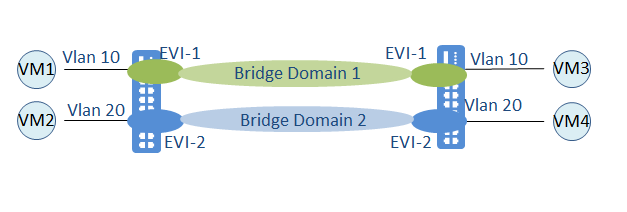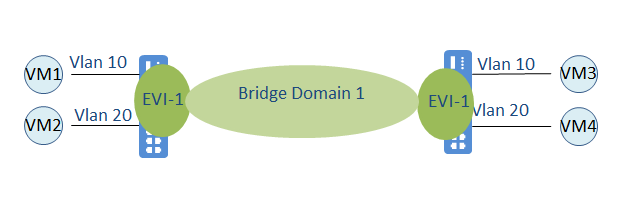EVPN is a standards-based BGP control plane to advertise MAC addresses, MAC and IP bindings and IP Prefixes. EVPN be used for both layer 2 services including p2p services and p2mp services and layer 3 services.
The beauty of EVPN is, it provides single control plane solution for both Layer 2 and Layer 2 services across the multiple data planes. From the simplicity and automation point of view this seems like one of the biggest advantage of EVPN. Here are some more benefits of EVPN;
Multiple Ethernet VPN instances (EVIs) can be configured on PEs at the edge of an EVPN and user networks can connect to EVIs as Port based, Vlan Based, Vlan bundle and Vlan Aware bundle.
In port-based mode, a physical interface without any sub-interface is used to access a user service. This service mode is not a common use case and can be used only to carry Layer 2 services.
In the Vlan-based mode, the physical interfaces connected to user networks and each of them may have different sub-interfaces created. Each sub-interface is associated with a unique VLAN and added to a specific bridge domain (BD). For the bridge domain, we may have BDIF interface and that’s why this service mode is used for carrying Layer 2 and Layer 2 services.

In VLAN bundle mode, multiple Vlans are connected to same VNI and Bridge Domain. This service mode can also be used to carry Layer 2 or Layer 3 services.

In VLAN-aware bundle mode, an EVI connects to multiple vlans. The EVI can be bound to multiple BDs.
In which case, the EVI must have different BD tags configured and when EVPN routes are exchanged Bridge Domain tag will be exchanged in the Ethernet Tag ID field.
In this service mode, users connected to the same EVI use separate forwarding entries. When forwarding traffic BD tag is also attached to the packets to locate correct forwarding table.
